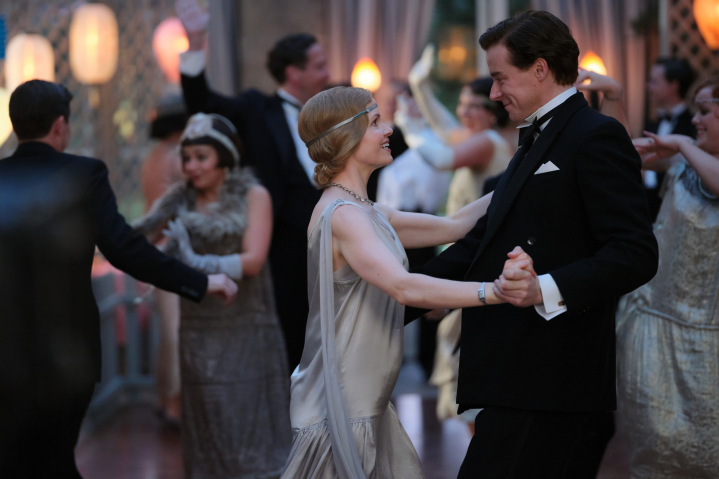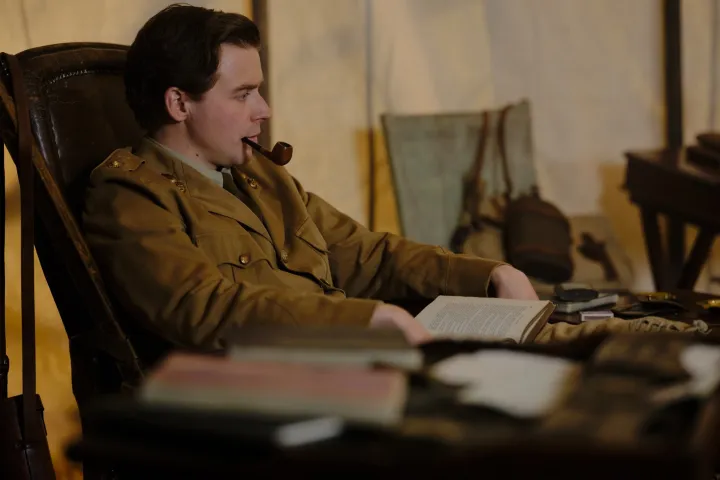In the final act of director Terence Davies’ achingly beautiful new film Benediction, a son asks his father, “Why do you hate the modern world?” The father responds, “Because it’s younger than I am.” It is a wry, observant, and delicately funny response, but it also speaks to a sense of disconnection — namely, the separation one man feels between himself and the world around him.
That feeling of isolation and loneliness is at the heart of Benediction, Davies’ film about the life and work of British war poet Siegfried Sassoon. In the film, Sassoon is played by two actors, Peter Capaldi and Jack Lowden, and across Benediction’s 137-minute runtime, Davies’ script jumps between the various stages of Sassoon’s life. By doing so, Davies gradually builds an intricate portrait of the various moments of regret, shame, heartbreak, and devastation that not only shaped Sassoon’s life but also his poetry.
If this sounds like it might be familiar territory for Davies, that’s because it is. Davies has long been fascinated by the lonely figures who may or may not have wandered through the streets during England’s respective postwar eras. As both a soldier with divisive antiwar views and a closeted gay man, Sassoon more than makes sense as the latest addition to Davies’ ever-growing catalog of lonely men and women.
A haunting exploration of loneliness

As the film’s primary lead, Lowden makes a lasting impression as the younger Sassoon, deftly weaving together the character’s various contradictory emotions — namely, his yearning for both partnership and isolation — until his Sassoon feels like a complete man. In the film’s first half, Lowden is not only asked to jump between Sassoon’s combative impulses, but also to lay bare his arrogance and insecurities in several stunning conversation scenes that pair him opposite Ben Daniels’ Dr. Rivers, the psychologist tasked with monitoring Sassoon during his involuntary stay at a military mental hospital.
Capaldi, meanwhile, takes the notes of loneliness and heartbreak present in Lowden’s performance and hardens them. His Sassoon is more distant and uncaring than his younger self, but Capaldi’s nuanced performance easily bridges the gap between his version of the character and Lowden’s. Davies, for his part, only makes that feat easier. The director pulls out a number of his usual tricks in Benediction, including his penchant for picking surprisingly stirring needle drops and his unparalleled use of slow dissolves, which blend time periods together and add stunning touches of surrealism to even the most ordinary of frames.
The film does also share the same meditative, unhurried pace as many of Davies’ previous outings. Benediction does occasionally meander and lose momentum, which makes it sometimes difficult for the film to hit its intended emotional beats. Fortunately, Davies’ stunning visual eye and Nicola Daley’s gorgeous cinematography make looking at Benediction an undeniably rewarding experience even in its most lethargic moments.

Of the many beautiful images that Davies creates in Benediction, few are quite as innovative or thematically rich as the moment when Capaldi’s older Sassoon takes a moment to watch rain fall outside his countryside home. Throughout the scene, Capaldi’s face always remains on his window’s far left side, but as he watches the rain pour outside, the window’s middle and right sections become overtaken by translucent images of people that Sassoon has loved and lost throughout his life.
It is a beautiful moment, one that briefly flattens the distance that exists between the past and the present, but the window’s wooden dividers also further reinforce Sassoon’s separation from those he loves. That’s because, even in their moments of remembrance, Davies’ protagonists remain irreparably separate from everyone else. It’s that unbridgeable gap that imbues so much of Davies’ work with an inescapable sense of melancholy, but it’s also a testament to Davies’ brilliance that he never feels the need to force his characters to overcome their loneliness.
Instead, Davies understands that sometimes just acknowledging the things that keep us apart from those we love is enough to, as one character in Benediction proposes, cleanse our souls.
Benediction is set to hit theaters on Friday, June 3.



